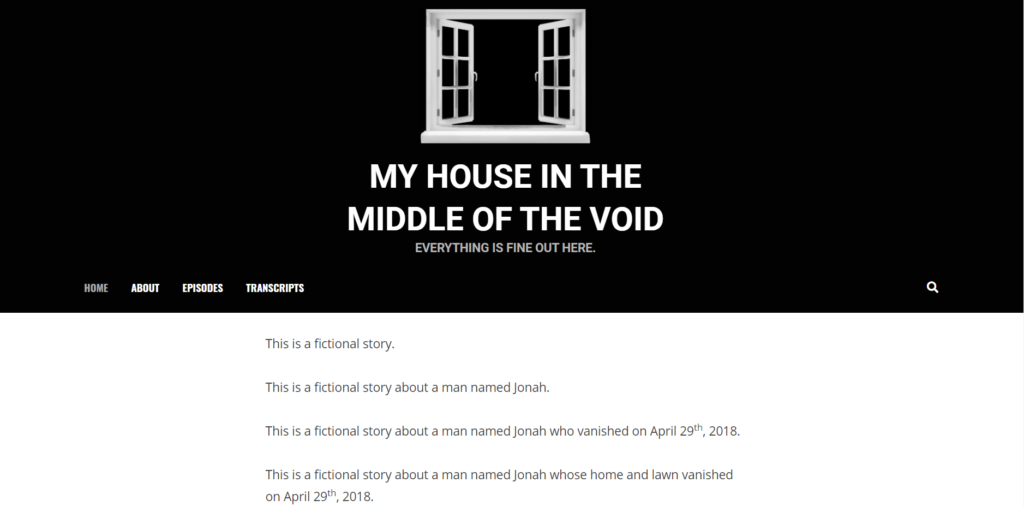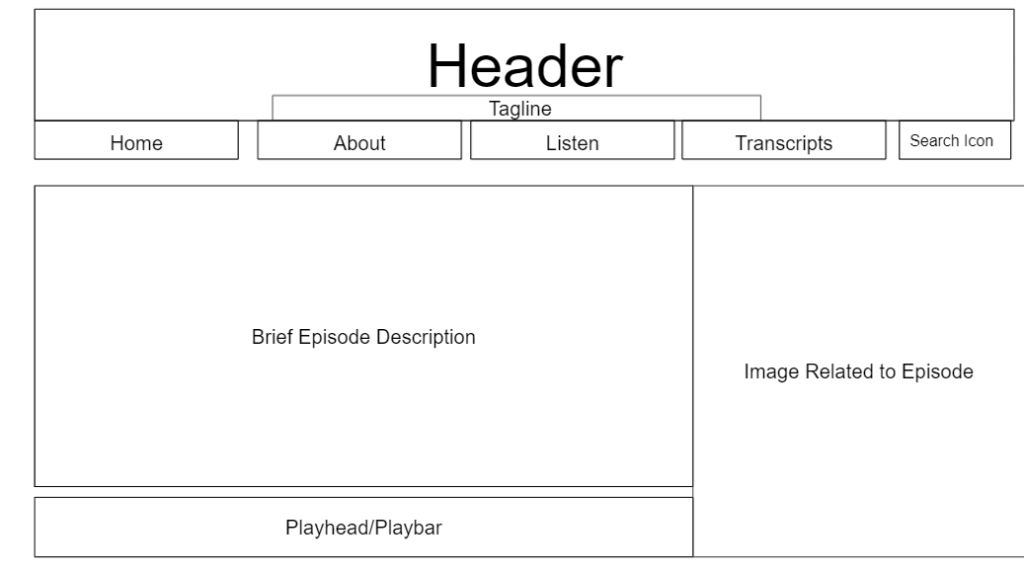Digital Storytelling
My Horror Podcast

This course introduced me to a range of digital mediums and genres, and it set me to the task of breaking them down or mimicking them. For example, I wrote a short story that could be told over Twitter posts, a short critique podcast script, and several blog posts. My proudest piece, however, is my Horror Podcast: My House In The Middle of the Void.
For the final project in our class, students had to decide on a narrative project that they would work on through the last months of class. We could base our project on any medium we had been exposed to in class. After a period of brainstorming, I settled on creating a horror podcast. I recently fallen in love with shows like “Lore” and “Welcome to Nightvale”, and I wanted to try to do something that could mimic that eerie feeling while taking an approach that was unique to me.
My next step was the planning stage. I drafted an outline for the show as well as created a wireframe for the website itself. Once both of these were critiqued, I revised my work. This process of critique and revision happened periodically through the remainder of the semester, even after the initial planning stage was finished.

The website was simple enough to make. I used WordPress as the platform with the “ “ theme. Once I had done that, I adjusted the text and backgrounds to suit an ominous atmosphere. As for the images, I wanted to find simplistic objects that could invoke a sense of mystery. Unsplash was a great resource for finding the royalty free imagery I needed.
I had previously written scripts, but I had never written for a fully audio narrative experience like this. It was challenging to communicate an immersive narrative purely through dialogue and sound design. I decided that a diary approach was best to convey the events of the story; however, I also learned to let some of the details remain unsaid or to have sound communicate information in place of dialogue. Once I finished the scripts for each episode, I decided to post them on the website in order to provide a resource to those that are hard of hearing.
The most daunting challenge with this project was creating the audio track. I did not have much professional equipment, and I had to take advantage of what free resources I could find. I played the role of the main character, and I recorded all of my sessions inside of a closet with a computer mic. The closet, I discovered, was the only place where the sound was dead enough to avoid interfering with my audio. Once my recording was finished, I used Adobe Audition, a paid service, to edit my audio into a single track. I took advantage of Youtube Studio’s royalty-free audio library for the sound effects. I also learned to re-balance the audio to give the podcast an archetypal “radio” sound. While this may sound straightforward, this entire process was the result of trial and error and a significant amount of research. I was surprised I was able to get this part finished as timely as I did.
The last task was to upload the audio onto my webpage. I decided to use Buzzsprout, since its service was free and because it could be added into my webpage via a plug-in. It also gave me a unique opportunity to recolor the play bar so that it would match the website’s aesthetic.
I was very pleased with how this project came out, and it ultimately won a Digital Media Award. If I could change anything, I think I would tighten up the script further and clean up the audio a little more. I would love to attempt to something like this again in the future.